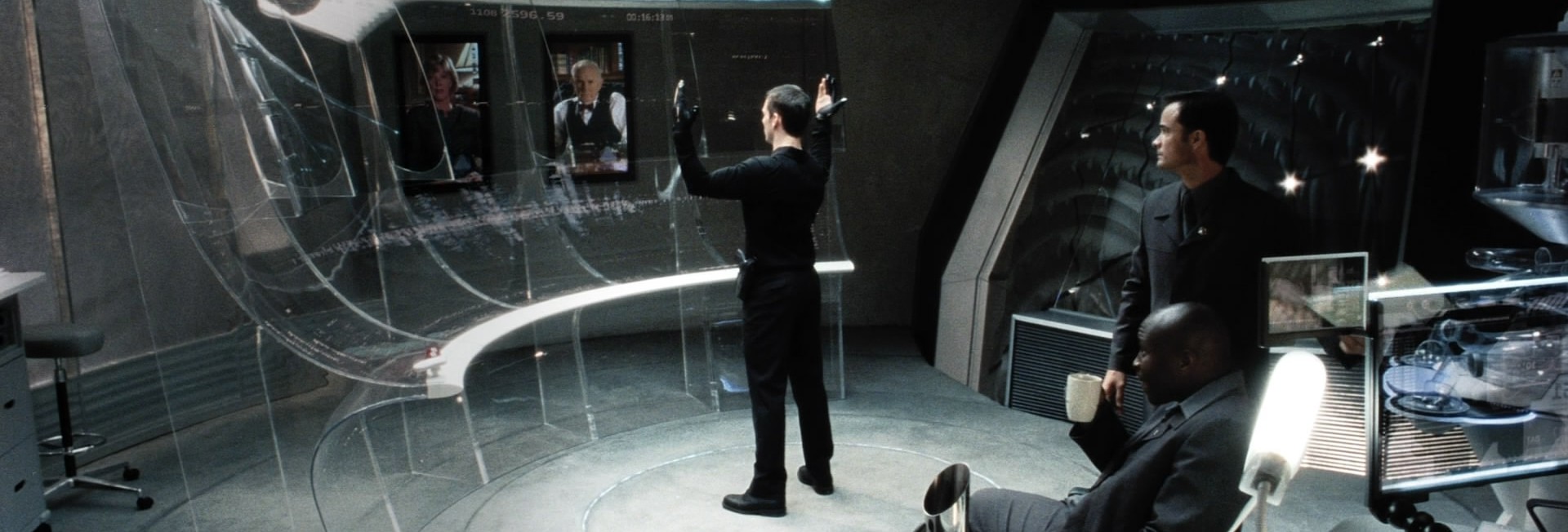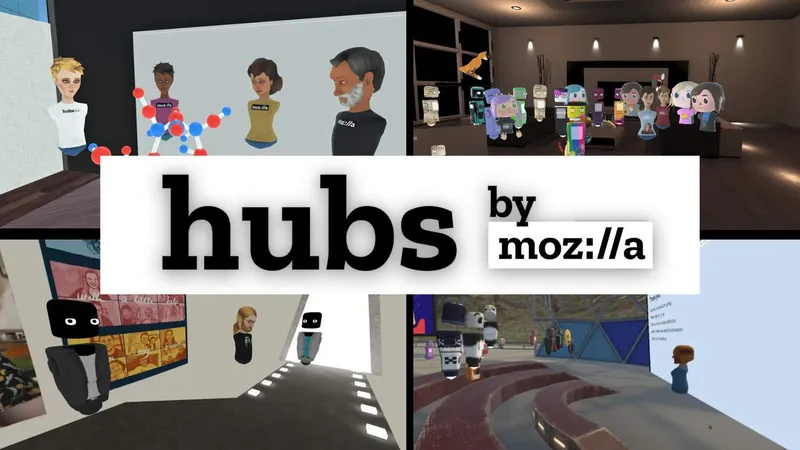Two years ago, I restarted my effort to make sense of the Metaverse. Today I can confidently tell you that I understand what the Metaverse is in the real world, and how it actually works. You’re about to understand it, too.
- What is the Metaverse?
- What purpose does it serve?
- Where do we begin our efforts to build it?
- What new applications can we make to take advantage of it?
Have we cracked the code? See for yourself if this article delivers those answers in a meaningful way.
What is the Metaverse? The real Metaverse?
No, not the one we’ve seen portrayed in science fiction. Also not the large software project which creates connected spaces for people to design their own worlds in. Not the intellectual notion which claims the sum of all media, yet offers no direction on how to get there.
So many of us say that we want the Metaverse, yet this decades long journey has been so frustrating. For the most part, we’re able to agree on something that is so clearly illustrated, yet we’re unable to say what it really is and how to implement it. Why?
Why We Don’t Have The Metaverse After 20+ Years
Ultimately, it comes down to three reasons: captivating depictions of the Metaverse in science fiction which were mistaken for usable blueprints, setting our sights way too high, and putting our focus on the wrong thing.
An early reviewer of this article noted that our own standards also got in the way. That’s true, and we’ll address the impact of standards in an upcoming article when we narrow our focus to a specific implementation.
Science Fiction was Only the Inspiration —
The science fiction Metaverse has been a great inspiration to all of us, but it is a really bad guide to how the Metaverse should act or be designed. Technical specifications often exist only to serve as a plot point which must be exploited or overcome by the characters in the story. There aren’t tried-and-tested specifications that we should actually build upon.

This isn’t an unusual situation. Science fiction has also inspired us in other related areas of technological interest, such as virtual interfaces. Unfortunately, what makes for such great eye-candy on the big screen can easily fail in the real world.
Be inspired, but don’t look back.
We Have to Walk Before We Can Run —
If we are creating the Metaverse, we need to start at the beginning. Too many efforts have jumped ahead to create a matured form of what the Metaverse might be. Part of the reason these efforts may jump ahead is because they’re targeting the vision of a fully-evolved Metaverse from science fiction. Another reason is the need for a commercial implementation to quickly generate revenue to sustain itself.
This is completely avoidable. We have to target our efforts at the right point in the lifecycle of what we’re building. We shouldn’t be building Metaverse 1.0, 2.0, or version 3.0. Mispredictions are costly, over-designing is costly – we have to start our effort at Metaverse v0.1.
The MMORPG is the Wrong Model —
Many people start with an MMORPG as the model for the Metaverse because it is a great fit for the world that was portrayed in science fiction. It seems to provides a significant head-start to the development process. This is the wrong approach for two additional reasons.
First, too many assumptions are baked into the MMORPG design. The Metaverse isn’t just games. It isn’t just social. It isn’t always a shared space. It isn’t always multiplayer. Sometimes you need a highly detailed physics simulation. Sometimes you need the lowest possible latency between participants.
The Metaverse is also for useful experiences, such as checking on your home automation and security system, analyzing opportunities in financial markets, and even engaging in a private and cryptographically protected one-on-one chat. One size does not fit all.
Virtual worlds expert Richard Bartle (a man with decades of experience and co-author of the first virtual world) cautions us that too much virtual world design is derivative. “Designers take one or more existing systems as foundations on which to build, sparing little thought as to why these earlier worlds were constructed the way that they were.” The MMORPG contains too much baggage, some of which we don’t entirely understand. (You can read more about this in his 2003 book Designing Virtual Worlds.)

Second, to say that the MMORPG model is the answer is to say that we’ve solved the question of what the Metaverse actually is. With no such solution in hand, we cannot defend an MMORPG as the answer. When you understand what The Metaverse actually is (and you will by the end of this article), the reason why the MMORPG model won’t work is clear: it goes too far beyond the core problem which needs to be solved.
That said, there will certainly be MMORPG experiences inside the Metaverse. It is just that despite an MMORPG being a virtual experience, the Metaverse itself doesn’t emerge from that one particular model.
So, What is The Metaverse?
You’ve been patient enough to read through an explanation of why we haven’t been able to implement the Metaverse. So I’ll get straight to the point and tell you exactly what the Metaverse is. At its core, we define the Metaverse (version 0.1) as follows:
Interconnected experiences in a virtual environment.
Nothing more. This is the most minimal definition of the Metaverse that we can arrive at without unnecessary features and requirements baked in. If we are going to start at the beginning, then this is it.
Wait a second… is this just another one of those intellectual notions with big ideas and no real direction? No, not this time. Let’s pull this down to earth with a comparison to the web.
The content on the web takes the form of web pages. A web page might be thought of as being similar to what an experience would be in the Metaverse. An experience is an environment which contains your presence. It could be a chat room for the enthusiasts of a particular topic. It could be an area which is dedicated to information about a product and filled with 3D models, descriptions, and interactive content. It could be a single player or multiplayer game.
The Metaverse provides value by connecting these otherwise isolated experiences in a way that makes sense. It needs to make sense to the computer. It needs to make sense to us as well.
An example:
You were participating in a group discussion in Convrge, and the conversation turned towards the topic of Cyborg Escape, a new game with an innovative gameplay element based on head tracking. You open a dynamic public portal to the game’s official room (which happens to be hosted in JanusVR). You enter the portal, and your friends quickly follow your lead.
You explore some of the artwork, models, and videos of the game and decide to give it a try. You walk into the game’s entrance, which was already defined as part of the room, and you enter the Cyborg Escape universe. You begin your adventure as a cyborg with a taste for freedom… and revenge.
The Metaverse links two or more isolated experiences in a way that creates new value. The whole becomes much more valuable than the sum of its parts. So what does this tell us about how the Metaverse works in the real world? A few things.
What Emerges from a Definition
Now that we can answer the question of what the Metaverse is, for the first time, we’ve arrived at a point where we can make informed choices in how to implement it. The question is no longer “What is the Metaverse?” It has become “How do we implement the Metaverse?”

An understood path to build the Metaverse —
We should take our very basic goal (interconnected experiences in a virtual environment) and figure out how that actually works. The Metaverse needs to be able to connect the experiences of more than one engine.
When architecting a solution, there will be any number of other priorities which factor into the decisions on the size and scope of those connections. This is a great conversation, and it will lead us to real answers, but it is beyond the scope of this article.
We’re certain to continue this conversation down the road, but for now, understand that our focus should be on the interconnect itself. Nothing more.
A new focus for VR applications —
Today, we are building unique virtual reality experiences that stand by themselves. For those of us who are software developers and in-world experience builders, we can start to see a whole new world of opportunities that have yet to be explored.
The Metaverse tells us that we should build experiences that directly connect to other experiences. The Metaverse also tells us that we need to be building the experiences that others will want to connect their own experiences into. In this respect, the Metaverse is similar to the web.
When you begin building an experience for the Metaverse, it makes sense to focus on solving one particular problem. You are trying to create an environment that everyone uses when they need to scratch a particular itch. You are app building. It seems valuable to focus on providing the best solution to one particular problem, rather than trying to solve many different problems at once.
- What live performances are happening right now in the Metaverse?
- How do I compare the layout of hotel rooms in any particular city?
- What is a good casual hangout for me and my friends?
- Where can I learn and practice some real-world abilities, like juggling?
- An earlier experience gave me a 3D model as reward. Who can print it and ship it to me?

An opportunity for today’s existing metaverse platforms —
At the other end of the spectrum, some of us are creating whole platforms for others to build new experiences inside of. These are typically virtual worlds with user created content. Our language for this is confusing and still evolving, but today, we call them a metaverse (common noun). These general-purpose platforms provide value by simplifying and enhancing the process of building new experiences.
At the start of the Metaverse (proper noun), the question for these platform providers will be if they want to become part of a larger community, or if they want to continue providing a standalone experience.
The Metaverse would provide value to their in-world developers by increasing their level of exposure to the rest of the online world, which increases the usefulness of the environments and experiences that they create.
The Metaverse provides value to the platforms themselves by drawing in even more developers and users. Later we’ll see how these connections can reward large and stable platforms at the same time it also rewards small platforms which offer unique services. The Metaverse can also enable these platforms to innovate and experiment, but with less danger of alienating their existing user base.
We’re Ready for a Meaningful Discussion
How should we tie our experiences together? What is it that we are looking for in a Metaverse experience? Now that we understand what the Metaverse actually is and what value it provides, we have a starting point for a more meaningful conversation on issues relating to the Metaverse and how it should take shape.
How far should we go to link these virtual worlds, and what technologies should we use? What mistakes from the past need to be avoided? Do you have any outstanding questions or concerns about the Metaverse? Leave your comments below.
The next article will explore the interconnect, and propose an implementation that is both practical and specific.




























